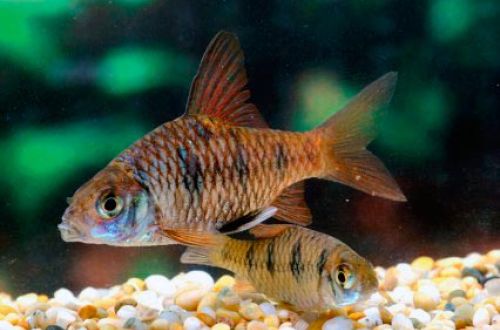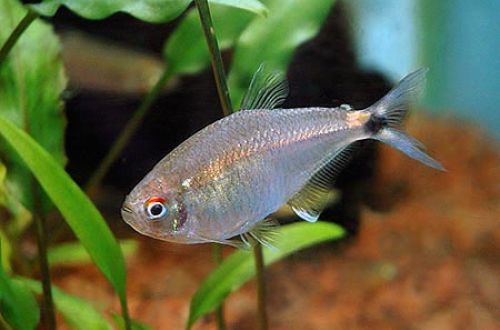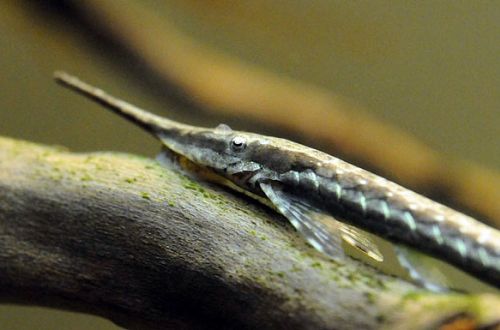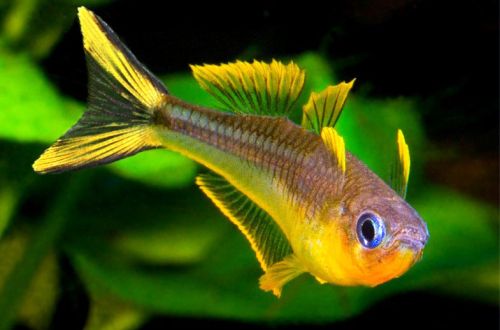
Barbus Maharashtra
The Maharashtra barb, scientific name Puntius sahyadriensis, belongs to the Cyprinidae family. One of the most recognizable Barb species due to its angular body shape. Easy to keep and breed, compatible with many other freshwater fish species. May be recommended for beginner aquarists.

Contents
Habitat
It comes from India from the territory of the state of Maharashtra, thanks to which this species got its name. The fish is found in rivers that originate in the Western Ghats and flow into the Arabian Sea. The natural habitat is characterized by rivers with a moderate flow, the substrate consists of sand mixed with gravel, the channel is littered with snags and a layer of fallen leaves. Aquatic plants grow mainly along the coast.
Brief information:
- The volume of the aquarium – from 80 liters.
- Temperature – 18-24°C
- Value pH — 6.0–7.8
- Water hardness – 2–15 dGH
- Substrate type – any
- Lighting – subdued
- Brackish water – no
- Water movement – moderate or strong
- The size of the fish is about 6 cm.
- Food – any food
- Temperament – peaceful
- Keeping in a group of 8-10 individuals
Description
Adults reach a length of about 6 cm. The coloration is dominated by red shades, and a series of wide dark diamond-shaped or oval-shaped marks run along the body. Males, unlike females, are brighter in color, and the ventral fins have white tips. During the spawning period, males may develop small tubercles-growths on their heads, which disappear the rest of the time.
Food
Omnivorous unpretentious species. In the home aquarium, it will accept most popular foods (dry, freeze-dried, frozen, live). The daily diet may well consist exclusively of prepared foods, such as dry flakes, pellets, etc.
Maintenance and care, arrangement of the aquarium
The optimal size of the aquarium for a group of 8-10 fish starts from 80 liters. It is desirable that the design resembles a natural habitat and includes sandy soil and various snags. The lighting is subdued, and therefore it is recommended to use shade-loving varieties of plants, mosses and / or ferns, placed along the walls of the tank.
Since the Maharashtra Barbus in nature lives in flowing reservoirs, therefore, it does not tolerate the accumulation of organic waste and needs high quality water. To do this, in addition to a productive filtration system, it is necessary to carry out several mandatory aquarium maintenance procedures. In particular, weekly replace part of the water (30–50% of the volume) with fresh water, regularly clean the soil and decoration elements from waste (food residues, excrement) and plaque, monitor and maintain stable pH and dGH values.
Behavior and Compatibility
Peaceful mobile fish, compatible with other non-aggressive species of comparable size. Prefer to be in a flock of 8-10 individuals mixed males / females.
Breeding / breeding
Reproduction in a home aquarium is possible and does not require the creation of special conditions. However, due to the lack of parental care, fry survival will be minimal if the eggs are not transferred to a separate tank in time. Usually this is a small container from 10 liters, filled with water from the main aquarium. The minimum set of equipment includes a simple airlift filter with a sponge and a heater. A light source is not required, the light coming from the room will be enough. Arrangement is arbitrary.
The incubation period lasts 24-36 hours, within 3-4 days the fry that appear will feed on the remains of the yolk sac and only then will they swim freely in search of food. Feed with specialized food for juvenile aquarium fish, if available – Artemia nauplii, small daphnia, etc.
Fish diseases
In a balanced aquarium ecosystem with species-specific conditions, diseases rarely occur. Diseases are caused by environmental degradation, contact with sick fish, and injuries. If this could not be avoided, then more about the symptoms and methods of treatment in the section “Diseases of aquarium fish”.





